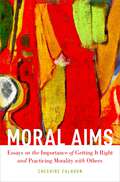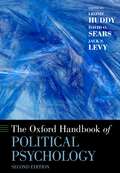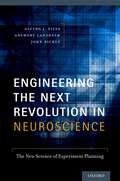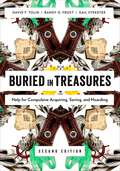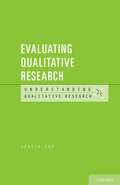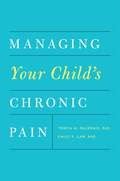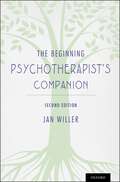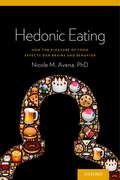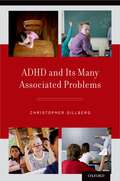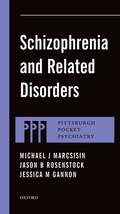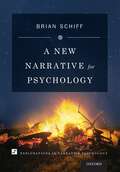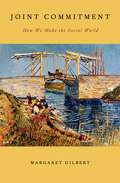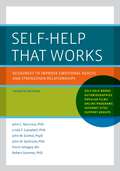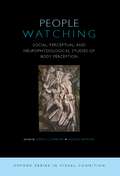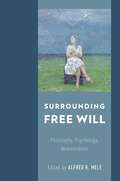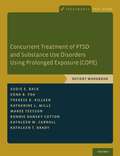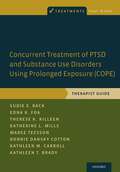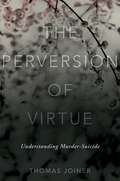- Table View
- List View
Moral Aims: Essays on the Importance of Getting It Right and Practicing Morality with Others
by Cheshire CalhounWe rely on two different conceptions of morality. On the one hand, we think of morality as a correct action guide. Morality is accessed by taking up a critical, reflective point of view where our concern is with identifying the moral rules that would be the focus of the requiring activities of persons in a hypothetical social world whose participants were capable of accessing the justifications for everyone's endorsing just this set of rules. On the other hand, in doing virtually anything connected with morality--making demands, offering excuses, justifying choices, expressing moral attitudes, getting uptake on our resentments, and the like-we rely on social practices of morality and shared moral understandings that make our moral activities and attitudes intelligible to others. This second conception of morality, unlike the first, is not shaped by the aim of getting it right or the contrast between correct and merely supposed moral requirements. It is shaped by the moral aim of practicing morality with others within an actual, not merely hypothetical, scheme of social cooperation. If practices based on misguided moral norms seem not to be genuine morality under the first conception, merely hypothetical practices seem not to be the genuine article under the second conception. The premise of this book, which collects together nine previously published essay and a new introduction, is that both conceptions are indispensable. But exactly how is the moral theorist to go about working simultaneously with two such different conceptions of morality? The book's project is not to construct an overarching methodology for handling the two conceptions of morality. Instead, it is to provide case studies of that work being done.
The Oxford Handbook of Political Psychology: Second Edition (Oxford Handbooks)
Political psychology applies what is known about human psychology to the study of politics. It examines how people reach political decisions on topics such as voting, party identification, and political attitudes as well as how leaders mediate political conflicts and make foreign policy decisions. The Oxford Handbook of Political Psychology gathers together a distinguished group of scholars from around the world to shed light on these vital questions. Focusing first on political psychology at the individual level (attitudes, values, decision-making, ideology, personality) and then moving to the collective (group identity, mass mobilization, political violence), this fully interdisciplinary volume covers models of the mass public and political elites and addresses both domestic issues and foreign policy. Now with new material providing an up-to-date account of cutting-edge research within both psychology and political science, this is an essential reference for scholars and students interested in the intersection of the two fields.
Engineering the Next Revolution in Neuroscience: The New Science of Experiment Planning
by Alcino J. Silva Anthony Landreth John BickleScience is growing at a pace that exceeds our comprehension. This is no less true of neuroscience than any other discipline. Ambiguity about what is known and what has been disproven confounds researchers and hampers research planning. There are simply too many research articles and too few hours in the day for anyone to read all that is relevant, let alone distinguish the reliable results from the sketchy ones. Engineering the Next Revolution in Neuroscience explores the proposal that we can overcome these obstacles to scientific progress, and revolutionize neuroscience, by using a framework to map the experimental record. With case studies from learning and memory research, the authors show that we can construct networks of experimental research that make the state of our knowledge manifest. Armed with maps of experiments, scientists can determine more efficiently what their fields have accomplished and where the unexplored territories still reside.
Buried in Treasures: Help for Compulsive Acquiring, Saving, and Hoarding
by David Tolin Randy O. Frost Gail SteketeeWhile most people find it relatively easy to manage their possessions, some find it extremely difficult. If you have a problem resisting the urge to acquire and you find your home cluttered and filled to capacity with items many people would find useless and unnecessary, you may suffer from a condition known as hoarding disorder. Hoarding is a behavioral problem consisting of clutter, difficulty discarding items, and excessive buying or acquiring. Hoarding is often associated with significant reduction in quality of life, and in extreme cases, it can pose serious health risks. If you or a loved one has hoarding disorder, this book can help. This fully updated Second Edition of Buried in Treasures outlines a scientifically based, effective program for helping those with hoarding disorder dig their way out of the clutter and chaos of their homes. Written by scientists and practitioners who are leaders in studying and treating hoarding disorder, this book outlines a program of skill-building, learning to think about possessions in a different way, and gradual challenges to help people manage their clutter and their lives. It also provides useful information for family and friends of people who hoard, as they struggle to understand and help. Discover the reasons for your problems with acquiring, saving, and hoarding, and learn new ways of thinking about your possessions so you can decide what you really need and what you can do without. Learn to identify the "bad guys" that cause and maintain your hoarding behavior and meet the "good guys" who can help motivate you and put you on the path to change. Useful self-assessments will help you determine the severity of your problem. Training exercises, case examples, organizing tips, and motivation boosters help change the way you think and behave toward your possessions. This book provides easy-to-understand strategies and techniques that anyone can use.
Buried in Treasures: Help for Compulsive Acquiring, Saving, and Hoarding
by David Tolin Randy O. Frost Gail SteketeeWhile most people find it relatively easy to manage their possessions, some find it extremely difficult. If you have a problem resisting the urge to acquire and you find your home cluttered and filled to capacity with items many people would find useless and unnecessary, you may suffer from a condition known as hoarding disorder. Hoarding is a behavioral problem consisting of clutter, difficulty discarding items, and excessive buying or acquiring. Hoarding is often associated with significant reduction in quality of life, and in extreme cases, it can pose serious health risks. If you or a loved one has hoarding disorder, this book can help. This fully updated Second Edition of Buried in Treasures outlines a scientifically based, effective program for helping those with hoarding disorder dig their way out of the clutter and chaos of their homes. Written by scientists and practitioners who are leaders in studying and treating hoarding disorder, this book outlines a program of skill-building, learning to think about possessions in a different way, and gradual challenges to help people manage their clutter and their lives. It also provides useful information for family and friends of people who hoard, as they struggle to understand and help. Discover the reasons for your problems with acquiring, saving, and hoarding, and learn new ways of thinking about your possessions so you can decide what you really need and what you can do without. Learn to identify the "bad guys" that cause and maintain your hoarding behavior and meet the "good guys" who can help motivate you and put you on the path to change. Useful self-assessments will help you determine the severity of your problem. Training exercises, case examples, organizing tips, and motivation boosters help change the way you think and behave toward your possessions. This book provides easy-to-understand strategies and techniques that anyone can use.
Evaluating Qualitative Research (Understanding Qualitative Research)
by Jeasik ChoQualitative researchers read journal articles, serve on masters' and doctoral committees, make careful decisions on whether conference proposals, manuscripts, or large-scale grant applications should be accepted or rejected; yet, best practices on how to do this work thoroughly and efficiently have gained little attention over the last few decades. Evaluating Qualitative Research provides expert insight and advice on how to evaluate the merit of qualitative research in the academic community. As one of the first works of literature to address this gap in the exploration of theory, practice, and reflection that comes with the evaluation of qualitative research, author Jeasik Cho constructs a typology of evaluation by examining actual information collected from a variety of websites and relevant journals. By analyzing a host of journals' established review guidelines and assessment apparatuses, Cho presents readers with the core criteria that stands out amongst these tools. As a result, readers will be able to confidently agree upon the standards for how to best evaluate qualitative research not only for their work but for the community at large.
Evaluating Qualitative Research (Understanding Qualitative Research)
by Jeasik ChoQualitative researchers read journal articles, serve on masters' and doctoral committees, make careful decisions on whether conference proposals, manuscripts, or large-scale grant applications should be accepted or rejected; yet, best practices on how to do this work thoroughly and efficiently have gained little attention over the last few decades. Evaluating Qualitative Research provides expert insight and advice on how to evaluate the merit of qualitative research in the academic community. As one of the first works of literature to address this gap in the exploration of theory, practice, and reflection that comes with the evaluation of qualitative research, author Jeasik Cho constructs a typology of evaluation by examining actual information collected from a variety of websites and relevant journals. By analyzing a host of journals' established review guidelines and assessment apparatuses, Cho presents readers with the core criteria that stands out amongst these tools. As a result, readers will be able to confidently agree upon the standards for how to best evaluate qualitative research not only for their work but for the community at large.
Managing Your Child's Chronic Pain
by Tonya M. Palermo Emily F. Law"Madeline is a 15-year-old girl with abdominal pain and headaches that occur most days of the week. Because of her pain, she has missed 99 days of school this year and is no longer able to play volleyball. Her parents have taken her to see a number of specialists and she has tried many different medications but she has not experienced any improvement in her pain..." Studies suggest that as many as four out of ten children and adolescents suffer from chronic pain. The causes of chronic pain in young people vary, from illness-related causes to pain following medical procedures. In fact, in some children the cause of chronic pain is never explained. Managing Your Child's Chronic Pain is an invaluable resource for parents who wish to learn how to help their children and families cope with persisting pain using cutting-edge, scientifically proven treatment tools and techniques. The easy-to-implement strategies in this book provide parents with practical instructions for pain management that will enable children to return to school, participate in sports and other activities, and pursue healthy and active social lives. With guidance on how to prevent relapse, maintain improvements, and prevent future problems with pain and disability, Managing Your Child's Chronic Pain will empower parents to take a hands-on approach to relieving their child's pain.
Managing Your Child's Chronic Pain
by Tonya M. Palermo Emily F. Law"Madeline is a 15-year-old girl with abdominal pain and headaches that occur most days of the week. Because of her pain, she has missed 99 days of school this year and is no longer able to play volleyball. Her parents have taken her to see a number of specialists and she has tried many different medications but she has not experienced any improvement in her pain..." Studies suggest that as many as four out of ten children and adolescents suffer from chronic pain. The causes of chronic pain in young people vary, from illness-related causes to pain following medical procedures. In fact, in some children the cause of chronic pain is never explained. Managing Your Child's Chronic Pain is an invaluable resource for parents who wish to learn how to help their children and families cope with persisting pain using cutting-edge, scientifically proven treatment tools and techniques. The easy-to-implement strategies in this book provide parents with practical instructions for pain management that will enable children to return to school, participate in sports and other activities, and pursue healthy and active social lives. With guidance on how to prevent relapse, maintain improvements, and prevent future problems with pain and disability, Managing Your Child's Chronic Pain will empower parents to take a hands-on approach to relieving their child's pain.
The Beginning Psychotherapist's Companion: Second Edition
by Jan WillerFilling in the gaps from students' lack of experience and confidence, The Beginning Psychotherapist's Companion, Second Edition is a supportive and empathetic guide, addressing real-world concerns and providing essential insights not taught in textbooks. With a reassuring and clear writing style, Willer offers practical suggestions and clinical examples to address the professional development and emotional concerns of the beginning psychotherapist. She guides readers through structuring the first session, making clinical observations, and establishing a therapeutic alliance. Through the use of culturally diverse clinical vignettes, Willer discusses the foundations of ethical practice, including informed consent, confidentiality, documentation, and setting boundaries. The reader is guided on how and when to refer clients for medication and other health care. Crisis management principles are detailed, including suicide and violence risk assessment, child abuse, elder abuse, intimate partner violence, and rape. Willer also provides professional advice on contemporary concerns such as social networking, online searches of clients, the psychotherapist's internet presence, and other important emerging challenges. Comprehensive, practical, and thoroughly updated, The Beginning Psychotherapist's Companion, Second Edition is the ideal resource for students and early career psychotherapists.
Hedonic Eating: How the Pleasure of Food Affects Our Brains and Behavior
by Dr Nicole AvenaOvereating and obesity are on the rise. Despite public health warnings, availability of diet books and programs, and the stigma associated with obesity, many people find it difficult to achieve and maintain a healthy body weight. While there are many books on the topic of caloric or need-based eating, obesity and overeating can also result from eating that is not driven by hunger. Recent research found that excess food intake is largely driven by the palatability of food and the pleasure derived from eating. Hedonic Eating: How the Pleasure of Food Affects Our Brains and Behavior discusses the pleasurable aspects of food intake that may cause and perpetuate overconsumption. Broad in its scope, this book examines the various behavioral, biological, and social rewards of food. The comprehensive chapters cover topics ranging from the neurochemistry of food reward to the hotly debated concept of 'food addiction,' while providing relevant and up-to-date information from the current body of scientific literature regarding food reward.
Hedonic Eating: How the Pleasure of Food Affects Our Brains and Behavior
by Dr Nicole AvenaOvereating and obesity are on the rise. Despite public health warnings, availability of diet books and programs, and the stigma associated with obesity, many people find it difficult to achieve and maintain a healthy body weight. While there are many books on the topic of caloric or need-based eating, obesity and overeating can also result from eating that is not driven by hunger. Recent research found that excess food intake is largely driven by the palatability of food and the pleasure derived from eating. Hedonic Eating: How the Pleasure of Food Affects Our Brains and Behavior discusses the pleasurable aspects of food intake that may cause and perpetuate overconsumption. Broad in its scope, this book examines the various behavioral, biological, and social rewards of food. The comprehensive chapters cover topics ranging from the neurochemistry of food reward to the hotly debated concept of 'food addiction,' while providing relevant and up-to-date information from the current body of scientific literature regarding food reward.
ADHD and Its Many Associated Problems
by Christopher GillbergADHD and Its Many Associated Problems is a clinical handbook about infants, children, adolescents, young adults, middle-aged, and elderly people with ADHD and all its many comorbidities. It is the only book on ADHD that includes the comprehensive view of the condition as but one (albeit, perhaps the most important) of many disorders subsumed under the umbrella concept of ESSENCE (Early Symptomatic Syndromes Eliciting Neurodevelopmental Clinical Examinations). This book reviews the history of ADHD, its definitions, symptoms, associated ESSENCE problems, etiology, risk and protective factors, approach to diagnosis and diagnostic work-up, comprehensive intervention guidelines, and outcome. It relies on the most up-to-date research and clinical information available. With over 40 years of practice in the field, Christopher Gillberg demonstrates his extensive research and clinical experience in ADHD and Its Many Associated Problems. More than any other book in the field, it focuses on the variable clinical presentation and the importance of early recognition of these most important public health problems of our time. It makes the point that in order to be able to deal with ADHD in a holistic way, clinicians need to be aware that ADHD is not just about ADHD, but about an entire host of other problems. The book emphasizes the strengths that people with ADHD demonstrate, strengths that can be turned into great assets, but only if the nature of the underlying problems are acknowledged. ADHD and Its Many Associated Problems is intended for specialist neurologists and psychiatrists, but can also be of great value to general practitioners and clinical psychologists. It is useful also for social workers, teachers, and, people who suffer from the condition(s).
Schizophrenia and Related Disorders (Pittsburgh Pocket Psychiatry Series)
by Michael J Marcsisin Jason B Rosenstock Jessica M GannonPsychotic disorders are common and important psychiatric conditions, and patients suffering from psychosis can be challenging to assess and manage. In this new monograph, experts in schizophrenia and related psychoses review the current state of science in this area, and provide a practical and readable overview of the how to diagnose and treat individuals presenting with these disorders. This pocket-sized text features call-out boxes, case descriptions, practical tips, and general guidelines that should be ideal for medical students, residents, young mental health professionals, and trainees in other fields. Beginning with a history of psychosis, the authors proceed to explore the phenomenology of symptoms and experiences and how these can be used in clinical assessment. Diagnostic criteria are reviewed, along with common conditions in the differential diagnosis. Subsequent chapters tackle epidemiology, course and prognosis, and the neurobiology of psychotic disorders. The book concludes with chapters on treatment, both somatic and psychosocial, including discussion of novel interventional approaches and service delivery. The authors of this text are a mix of clinician-educators and scientific investigators, all with experience teaching trainees; this pocket-sized book has been developed to help young professionals easily gain a basic understanding of the complexities and challenges of psychotic disorders. Self-assessment questions, resources, and references will assist, but what really sets this book apart is the accessibility and concision of the text, ideal for individuals learning about or reviewing psychosis.
Schizophrenia and Related Disorders (Pittsburgh Pocket Psychiatry Series)
by Michael J Marcsisin Jason B Rosenstock Jessica M GannonPsychotic disorders are common and important psychiatric conditions, and patients suffering from psychosis can be challenging to assess and manage. In this new monograph, experts in schizophrenia and related psychoses review the current state of science in this area, and provide a practical and readable overview of the how to diagnose and treat individuals presenting with these disorders. This pocket-sized text features call-out boxes, case descriptions, practical tips, and general guidelines that should be ideal for medical students, residents, young mental health professionals, and trainees in other fields. Beginning with a history of psychosis, the authors proceed to explore the phenomenology of symptoms and experiences and how these can be used in clinical assessment. Diagnostic criteria are reviewed, along with common conditions in the differential diagnosis. Subsequent chapters tackle epidemiology, course and prognosis, and the neurobiology of psychotic disorders. The book concludes with chapters on treatment, both somatic and psychosocial, including discussion of novel interventional approaches and service delivery. The authors of this text are a mix of clinician-educators and scientific investigators, all with experience teaching trainees; this pocket-sized book has been developed to help young professionals easily gain a basic understanding of the complexities and challenges of psychotic disorders. Self-assessment questions, resources, and references will assist, but what really sets this book apart is the accessibility and concision of the text, ideal for individuals learning about or reviewing psychosis.
A New Narrative for Psychology (Explorations in Narrative Psychology)
by Brian SchiffHow can a narrative perspective help us advance our understanding of the fundamental problems of human psychology and better appreciate persons in diverse social and cultural contexts? In A New Narrative for Psychology, author Brian Schiff offers researchers and scholars a new way to study and think about people and the goals of psychological understanding today. By providing a challenging critique of contemporary methods and addressing what these approaches to psychological research leave unexplored, Schiff presents readers with a cutting-edge approach for getting at the thorny problem of meaning making in human lives. While serving as a helpful guide for psychology scholars, this volume is also an excellent place to start for readers who might be unfamiliar with narrative psychology. Here, Schiff carefully considers the history of the field and its place within contemporary psychology by offering a fresh and innovative theoretical perspective on narrative as an active interpretative process present in most aspects of our everyday lives. Further, Schiff expertly grounds this research for readers in clear, vivid illustrations of what can be learned from the intensive study of how people narrate their experiences, selves, social relationships, and the world today. A New Narrative for Psychology is an invitation to a fascinating conversation about the critical questions of the discipline, the most effective strategies for approaching them, and an exciting glimpse into the future of narrative psychology.
A New Narrative for Psychology (Explorations in Narrative Psychology)
by Brian SchiffHow can a narrative perspective help us advance our understanding of the fundamental problems of human psychology and better appreciate persons in diverse social and cultural contexts? In A New Narrative for Psychology, author Brian Schiff offers researchers and scholars a new way to study and think about people and the goals of psychological understanding today. By providing a challenging critique of contemporary methods and addressing what these approaches to psychological research leave unexplored, Schiff presents readers with a cutting-edge approach for getting at the thorny problem of meaning making in human lives. While serving as a helpful guide for psychology scholars, this volume is also an excellent place to start for readers who might be unfamiliar with narrative psychology. Here, Schiff carefully considers the history of the field and its place within contemporary psychology by offering a fresh and innovative theoretical perspective on narrative as an active interpretative process present in most aspects of our everyday lives. Further, Schiff expertly grounds this research for readers in clear, vivid illustrations of what can be learned from the intensive study of how people narrate their experiences, selves, social relationships, and the world today. A New Narrative for Psychology is an invitation to a fascinating conversation about the critical questions of the discipline, the most effective strategies for approaching them, and an exciting glimpse into the future of narrative psychology.
Joint Commitment: How We Make the Social World
by Margaret GilbertIn this wide-ranging collection of essays, distinguished philosopher Margaret Gilbert investigates the structure of our social world. People often speak of what we do, think, and feel, and of our values, conventions, and laws. Asking what we mean by such talk, Gilbert invokes the foundational idea of joint commitment. She applies this idea to topics ranging from the mutual recognition of two people to the unity of the European Union, from marital love to patriotism, from promissory obligation to the rights of those who issue authoritative commands. Written clearly and without undue technicality, this richly textured collection of essays makes a powerful argument for the importance of joint commitment in our personal and public lives.
Self-Help That Works: Resources to Improve Emotional Health and Strengthen Relationships
by John C. Norcross Linda F. Campbell John M. Grohol John W. Santrock Florin Selagea Robert SommerSelf-help is big business, but alas, not always a scientific one. Self-help books, websites, and movies abound and are important sources of psychological advice for millions of Americans. But how can you sift through them to find the ones that work? Self-Help That Works is an indispensable guide that enables readers to identify effective self-help materials and distinguish them from those that are potentially misleading or even harmful. Six scientist-practitioners bring careful research, expertise, and a dozen national studies to the task of choosing and recommending self-help resources. Designed for both laypersons and mental-health professionals, this book critically reviews multiple types of self-help resources, from books and autobiographies to films, online programs, support groups, and websites, for 41 different behavioral disorders and life challenges. The revised edition of this award-winning book now features online self-help resources, expanded content, and new chapters focusing on autism, bullying, chronic pain, GLB issues, happiness, and nonchemical addictions. Each chapter updates the self-help resources launched since the previous edition and expands the material. The final chapters provide key strategies for consumers evaluating self-help as well as for professionals integrating self-help into treatment. All told, this updated edition of Self-Help that Works evaluates more than 2,000 self-help resources and brings together the collective wisdom of nearly 5,000 mental health professionals. Whether seeking self-help for yourself, loved ones, or patients, this is the go-to, research-based guide with the best advice on what works.
People Watching: Social, Perceptual, and Neurophysiological Studies of Body Perception (Advances in Visual Cognition)
by Kerri L. JohnsonThe human body has long been a rich source of inspiration for the arts, and artists have long recognized the body's special status. While the scientific study of body perception also has an important history, recent technological advances have triggered an explosion of research on the visual perception of the human body in motion, or as it is traditionally called, biological motion perception. Now reaching a point of burgeoning inter-disciplinary focus, biological motion perception research is poised to transform our understanding of person construal. Indeed, several factors highlight a privileged role for the human body as one of the most critical classes of stimuli affecting social perception. Human bodies in motion, for example, are among the most frequent moving stimulus in our environment. They can be readily perceived at a physical distance or visual vantage that precludes face perception. Moreover, body motion conveys meaningful psychological information such as social categories, emotion state, intentions, and underlying dispositions. Thus, body perception appears to serve as a first-pass filter for a vast array of social judgments from the routine (e.g., perceived friendliness in interactions) to the grave (e.g., perceived threat by law enforcement). This book provides an exciting integration of theory and findings that clarify how the human body is perceived by observers.
Surrounding Free Will: Philosophy, Psychology, Neuroscience
This volume showcases cutting-edge scholarship from The Big Questions in Free Will project, funded by a grant from the John Templeton Foundation and directed by Alfred R. Mele. It explores the subject of free will from the perspectives of neuroscience; social, cognitive, and developmental psychology; and philosophy (both traditional and experimental). The volume consists of fourteen new articles and an introduction from top-ranked contributors, all of whom bring fresh perspectives to the question of free will. They investigate questions such as: How do children conceive of free will and how does their concept of free will develop? How does lowered or raised confidence in the existence of free will affect our behavior? What modifies our power to resist temptation? What do lay folk mean by free will? What brain processes underlie decisions? How does the conscious experience of voluntary action contribute to the neural control of behavior? What are the neural differences between deliberate choosing and arbitrary picking? How do neuroscientific studies of decision making in monkeys bear on human free will? Is determinism compatible with free will? What can a proper understanding of causation tell us about free will? What is moral responsibility? Readers interested in the current and future direction of scholarship on free will find this volume essential reading.
Concurrent Treatment of PTSD and Substance Use Disorders Using Prolonged Exposure: Patient Workbook (Treatments That Work)
by Sudie E. Back Edna B. Foa Therese K. Killeen Katherine L. Mills Maree Teesson Bonnie Dansky Cotton Kathleen M. Carroll Kathleen T. BradyConcurrent Treatment of PTSD and Substance Use Disorders Using Prolonged Exposure (COPE) is a cognitive-behavioral psychotherapy program designed for patients who have posttraumatic stress disorder (PTSD) and a co-occurring alcohol or drug use disorder. COPE represents an integration of two evidence-based treatments: Prolonged Exposure (PE) therapy for PTSD and Relapse Prevention for substance use disorders. COPE is an integrated treatment, meaning that both the PTSD and substance use disorder are addressed concurrently in therapy by the same clinician, and patients can experience substantial reductions in both PTSD symptoms and substance use severity. Patients use the COPE Patient Workbook while their clinician uses the Therapist Guide to deliver treatment. The program is comprised of 12 individual, 60 to 90 minute therapy sessions. The program includes several components: information about how PTSD symptoms and substance use interact with one another; information about the most common reactions to trauma; techniques to help the patient manage cravings and thoughts about using alcohol or drugs; coping skills to help the patient prevent relapse to substances; a breathing retraining relaxation exercise; and in vivo (real life) and imaginal exposures to target the patient's PTSD symptoms.
Concurrent Treatment of PTSD and Substance Use Disorders Using Prolonged Exposure: Therapist Guide (Treatments That Work)
by Sudie E. Back Edna B. Foa Therese K. Killeen Katherine L. Mills Maree Teesson Bonnie Dansky Cotton Kathleen M. Carroll Kathleen T. BradyConcurrent Treatment of PTSD and Substance Use Disorders Using Prolonged Exposure (COPE) is a cognitive-behavioral psychotherapy program designed for patients who have posttraumatic stress disorder (PTSD) and a co-occurring alcohol or drug use disorder. COPE represents an integration of two evidence-based treatments: Prolonged Exposure (PE) therapy for PTSD and Relapse Prevention for substance use disorders. COPE is an integrated treatment, meaning that both the PTSD and substance use disorder are addressed concurrently in therapy by the same clinician, and patients can experience substantial reductions in both PTSD symptoms and substance use severity. Patients use the COPE Patient Workbook while their clinician uses the Therapist Guide to deliver treatment. The program is comprised of 12 individual, 60 to 90 minute therapy sessions. The program includes several components: information about how PTSD symptoms and substance use interact with one another; information about the most common reactions to trauma; techniques to help the patient manage cravings and thoughts about using alcohol or drugs; coping skills to help the patient prevent relapse to substances; a breathing retraining relaxation exercise; and in vivo (real life) and imaginal exposures to target the patient's PTSD symptoms.
The Perversion of Virtue: Understanding Murder-Suicide
by Thomas JoinerOf the approximately 38,500 deaths by suicide in the U.S. annually, about two percent--between 750 and 800--are murder-suicides. The horror of murder-suicides looms large in the public consciousness--they are reported in the media with more frequency and far more sensationalism than most suicides, and yet we have little understanding of this grave form of violence. In The Perversion of Virtue, leading suicide researcher Thomas Joiner explores the nature of murder-suicide and offers a unique new theory to explain this nearly unexplainable act: that murder-suicides always involve the wrongheaded invocation of one of four interpersonal virtues: mercy, justice, duty, and glory. The parent who murders his child and then himself seeks to save his child from a fatherless life of hardship; the wife who murders her husband and then herself seeks to right the wrongs he committed against her, and so on. Murder-suicides involve the gross misperception of when and how these four virtues should be applied. Drawing from extensive research as well as real examples from the media, Joiner meticulously examines, deconstructs, and finally rebuilds our understanding of murder-suicide in such a way that brings tragic reason to what may seem an unfathomable act of violence. Along the way, he dispels some of the most enduring myths of suicide--for instance, that suicide is usually an impulsive act (it is almost always pre-meditated), or that alcohol or drugs are involved in most suicides (usually they are not). Sure to be controversial, this book seeks to make sense of one of the most difficult-to-comprehend types of violence in modern society, shedding new light that will ultimately lead to better understanding and even prevention.
The Perversion of Virtue: Understanding Murder-Suicide
by Thomas JoinerOf the approximately 38,500 deaths by suicide in the U.S. annually, about two percent--between 750 and 800--are murder-suicides. The horror of murder-suicides looms large in the public consciousness--they are reported in the media with more frequency and far more sensationalism than most suicides, and yet we have little understanding of this grave form of violence. In The Perversion of Virtue, leading suicide researcher Thomas Joiner explores the nature of murder-suicide and offers a unique new theory to explain this nearly unexplainable act: that murder-suicides always involve the wrongheaded invocation of one of four interpersonal virtues: mercy, justice, duty, and glory. The parent who murders his child and then himself seeks to save his child from a fatherless life of hardship; the wife who murders her husband and then herself seeks to right the wrongs he committed against her, and so on. Murder-suicides involve the gross misperception of when and how these four virtues should be applied. Drawing from extensive research as well as real examples from the media, Joiner meticulously examines, deconstructs, and finally rebuilds our understanding of murder-suicide in such a way that brings tragic reason to what may seem an unfathomable act of violence. Along the way, he dispels some of the most enduring myths of suicide--for instance, that suicide is usually an impulsive act (it is almost always pre-meditated), or that alcohol or drugs are involved in most suicides (usually they are not). Sure to be controversial, this book seeks to make sense of one of the most difficult-to-comprehend types of violence in modern society, shedding new light that will ultimately lead to better understanding and even prevention.
